The bedrock of the performance review process is the performance review template. There are different types of employee evaluation form templates, depending upon what you want your reviews to achieve. Ultimately, though, every one of them is simply a vehicle for managers to conduct an effective performance review, and have an open and honest two-way conversation with their direct reports.
Using a customisable template means that you can cover what you need to, and go on to use the same employee evaluation form for everyone in that role. The right performance review template is invaluable for energising and guiding employees through the next work period, up until their next performance review, and gives valuable data that can be measured.
Access templates: Start collecting employee experience data with our free survey templates
What to include in your performance review template
Basic information
For the purposes of analysis and demographics, you’ll need to include:
- Employee’s name
- Employee’s ID
- Department
- Position
- Reviewer’s name
- Reviewer’s title
Review period
So that you can track an employee’s professional growth and progress over time, it is essential that the performance review template includes the review period (week, month, quarter, year) as well as the date the review took place.
Ratings system
The most important thing with a ratings system is that employees understand what each rating means. There should be sufficient explanation tied to each one so the employee can see what they did well, and what they need to do to improve and move up a rating. Here’s an example:
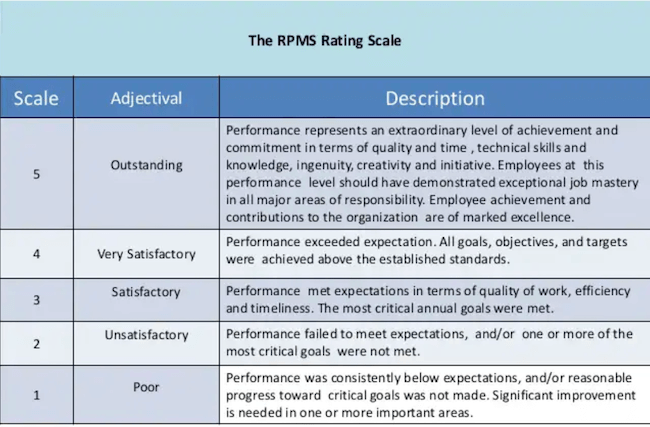
Evaluation items
List those particular skills or job aspects in the performance review template so they can be given a rating. Ensure there is self-evaluation as well as manager evaluation.
Goals
Employees need to know about their next expected set of goals and challenges so they can see the performance review rating they need to achieve.
Open text boxes for comments
Asking for extra feedback in the employee’s own words is a useful way to glean honest comments, and for the employee to showcase achievements or discuss aspects of the job they found challenging. Platforms such as Qualtrics Employee XM use AI to gauge and measure sentiment in open text responses, which enriches the feedback further.
Signatures
Don’t forget to sign the employee performance review – both employee and reviewer.
Best practice for crafting effective performance review forms
One study revealed that 65% of employees didn’t believe their performance evaluations were even relevant to their jobs, while another found that only 29% of employees ‘strongly agree’ that their performance reviews are fair, and 26% ‘strongly agree’ they are accurate.
With this in mind, it’s essential that your performance review template is crafted in such a way that the reviews are as fair and accurate about job performance as possible. Make sure you:
- Customise the right form for the right job: Include the specific competencies for that role so that the completed form will be true to the performance required for just that job.
- Are clear about purpose: State what it is you want to find out, and make sure your form will gather the right information.
- Don’t do too much: Tempting as it is to gather as much information in one fell swoop as possible, you’ll just dilute what you are trying to achieve. Use one form to evaluate one set of criteria, and if you have things you want to investigate further, do another review.
- Select a suitable rating scale method: Some roles may be easily assessed using numerical ratings, while others need more descriptive detailed ratings to catch all the nuances of the job. Explain clearly what the ratings on the rating scale mean.
- Set SMART (Specific, Measurable, Achievable, Realistic, Timely) goals: Employees know where they are when goals set are specific and relevant, with defined metrics for success and achievable deadlines.
- Encourage development: A performance review should leave an employee feeling inspired, motivated, and excited about their personal and professional development. Make space to identify and establish future training goals.
- Stay objective: Write in plain language so there can be no ambiguity or subjectivity, and back up feedback with hard numbers.
- Give detailed feedback: Employees need to understand exactly what they need to do to improve and develop. Performance reviews are no time for being vague.
What NOT to put in an employee performance review template
There are excellent performance review templates – and then there are some dreadful ones. Here are some things that should NOT find their way into your template:
- Unexpected assessments: The feedback from a performance review should never come as a rude shock to employees. Details of the review process and what is expected of employees should be communicated as early as possible – ideally during the onboarding process.
- Getting personal: Feedback must always focus on behaviour and actions, never on the person themselves. Criticising personal attributes has no place in an employee performance review.
- Bias and limitation: People work in their own ways – and in this time of pandemic hybrid working – in their own time and place. This innovation is often what helps companies develop. As long as work gets done safely and goals are met, there is no place to try and impose ‘the right’ working methods on employees in reviews.
- Non-specifics: Woolly, meaningless comments will leave employees feeling confused about how their work has been received and whether they need to improve or not. Feedback must always be clear, task-focused, and succinct.
- No guidance: Performance reviews are essential for guiding employees to improve their work, or further their development, through advice, expertise, training, courses, coaching, or mentoring. There must be guidance on the performance review form.
- No follow-up: Feedback is nothing without action. Where issues are flagged, managers must act quickly to make sure they are resolved. A review needs to indicate that it will be followed up in writing and that there will be check-ins to monitor improvements.
What are the different types of employee performance review templates?
Weekly or fortnightly performance review
This is a simple performance review template, but putting these together can be very useful when collated over a set period of time. Weekly/fortnightly performance review templates don’t have to collect a huge amount of data each time, and they don’t need to be goal-oriented. They are useful for record-keeping and ensuring a project stays on track week on week: particularly useful for fast-moving and agile projects.
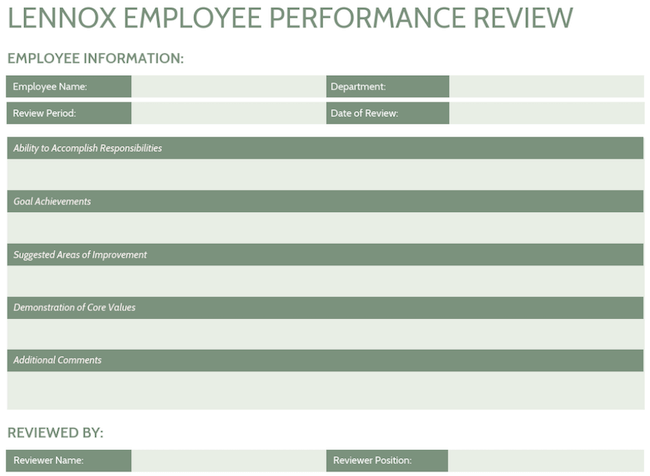
Monthly performance reviews
These are particularly useful for companies who employ freelancers or people on short-term contracts, and for new hires in their probationary period (where the review can form part of the onboarding process). New projects also benefit from a monthly check-in so that they stay on track, the project team members have all the skills and resources they need, and no early catastrophes happen. And some employees prefer monthly check-ins with the regular cadence of progress reports, rather than getting a single unpleasant (or pleasant) surprise once a year in their annual performance review.
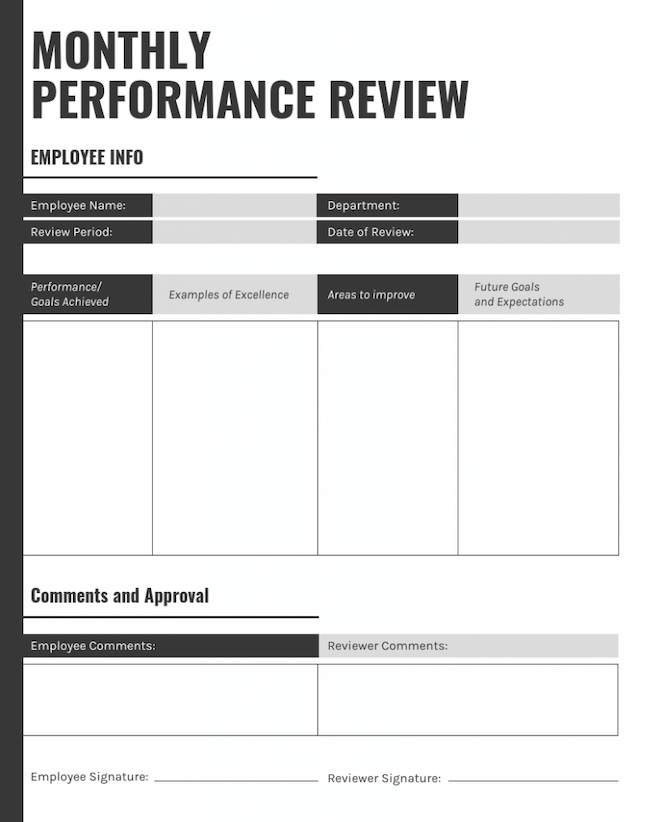
Quarterly performance evaluations
Companies tend to divide their business into quarters through the year (Q1, Q2, Q3, Q4), with attendant goals, targets, and budgets, so it makes sense that employee performance reviews are run alongside these. Three months is enough time for an employee to get stuck in and achieve goals and targets, as well as learning and developing – there is plenty to say in terms of feedback. You can aggregate weekly/fortnightly or monthly reviews together each quarter to create a report, and organise a face-to-face employee review meeting.
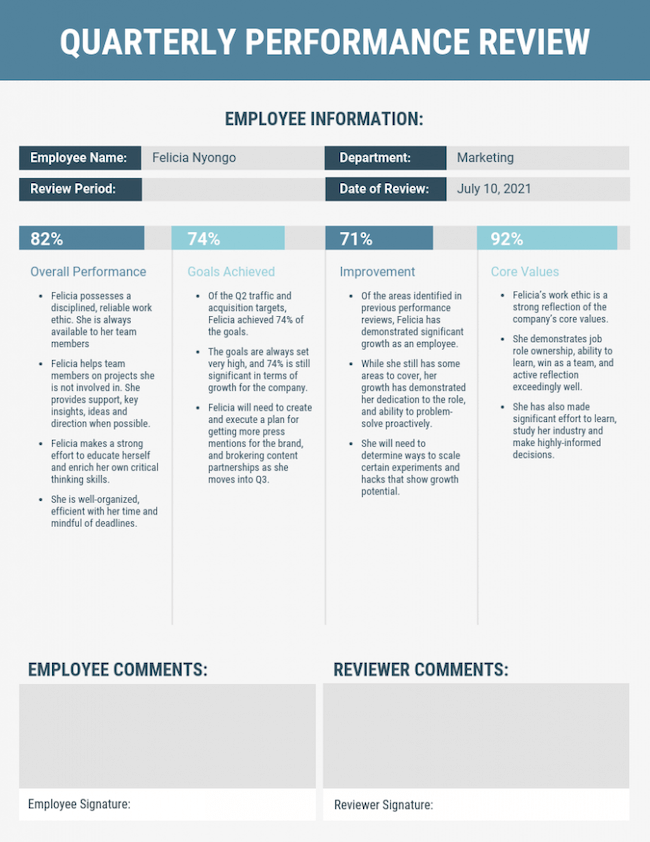
Annual performance review template
Some businesses still conduct the annual performance review, but it is increasingly being replaced, or at least augmented, by pulse surveys and 360 reviews throughout the year. A traditional annual performance review template simply had too much information on it to be manageable; it looked back rather than forwards, and a year is far too long for employees to wait to get feedback. However, reviews and feedback throughout the year collated into one 12-month overall performance report are a useful bank of information, provided all the feedback has had actions attached to it.
How Qualtrics templates can help your performance review process
The performance review is an integral part of your employees’ lifecycle and their employee experience. There are plenty of free, customisable performance review templates available online – we like these from Venngage.
Qualtrics Employee XM also has a range of survey templates that cover the whole employee lifecycle, from candidate experience surveys to employee exit interview surveys. Demonstrate to your employees in their performance reviews that you have insightful data about their individual experience, achievements, feedback, and development drawn from these surveys for their unique profile.
Check out all of our free employee experience survey templates:
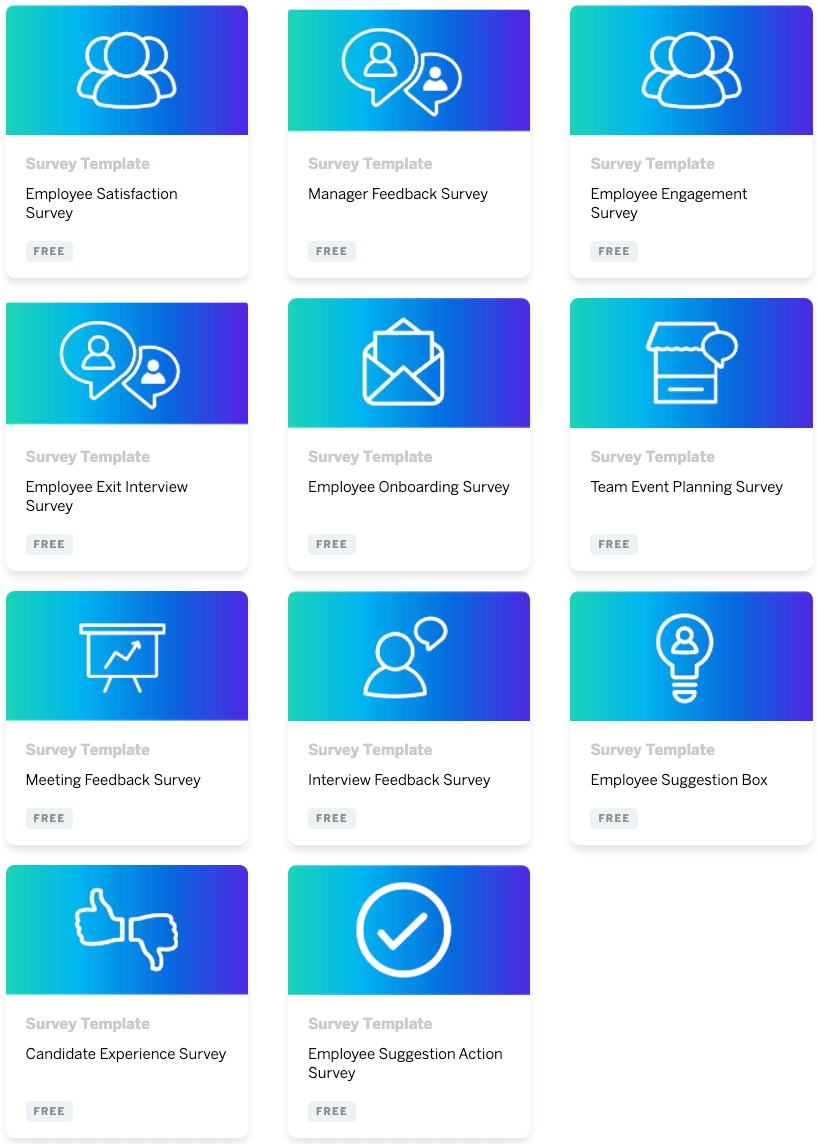
Learn how you can accelerate your employees' growth with our 360 Feedback eBook